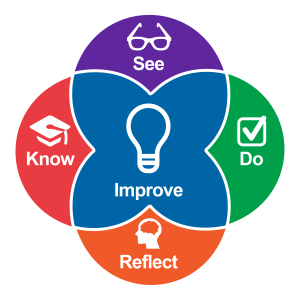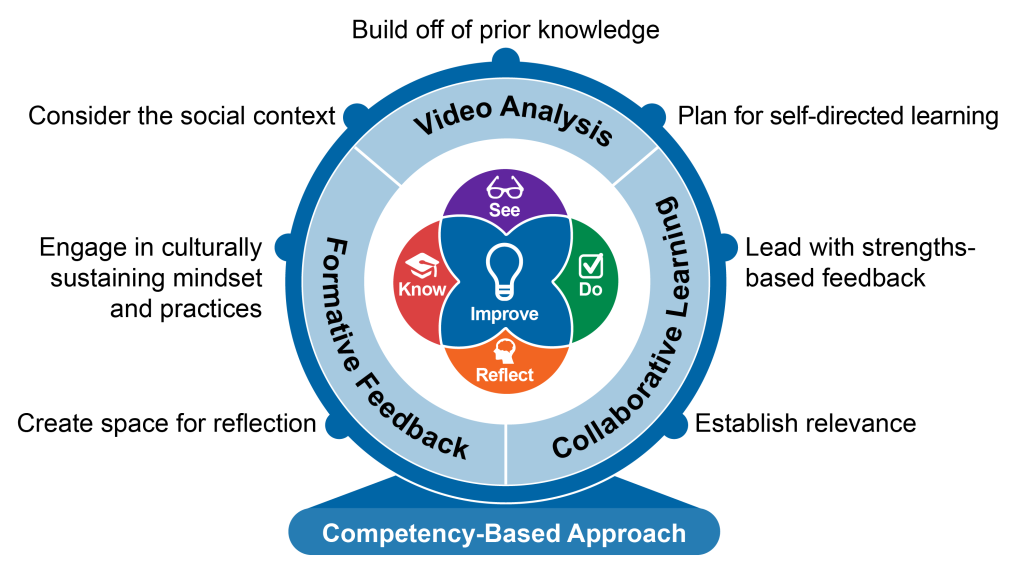Content Writing at Cultivate Learning
Frameworks That Structure Our Writing
Content writers can use both the Intentional Teaching Framework (ITF) and the Competency-Based Educator Development Model (CEDM) to structure learning experiences. Begin by clearly defining the evidence-based knowledge, skills, and dispositions necessary to support positive outcomes for children and families. Then consider how you can lead participants through each component of the ITF using direct instruction, examples, activities, discussions, assignments, Cultivate Learning media, etc. Include opportunities for participants to collaborate, analyze their practice using video, and give and receive feedback. The focus of the competency-based model is individualized improvement over time through targeted feedback and support, measured by evidence of learning rather than simply time spent on learning tasks.
Intentional Teaching Framework

Our products follow and align to the Intentional Teaching Framework (ITF). In this model, we focus on 5 components: Know, see, do, reflect, and improve. Briefly:
- Know – and opportunity to learn about a new skill or learn information.
- See – A chance to see the practice, skills, or information in action. Often using videos, photos, scenarios, or examples. Sometimes through role play or other engagement.
- Do – a chance to practice the skill or apply the learning. This can be through an activity, role play, etc.
- Reflect – the learner reflect about how they demonstrated the practice or how they were able to apply the learning. Goals may be set for next steps.
- Improve – the culmination of the framework results in competency-based learning which helps the learner improve their practice.
Refer to the ITF Overview and the ITF Template Handout for more information.
The Competency-Based Educator Development Model

The Competency-Based Educator Development Model (CEDM) is designed to guide the development of effective learning experiences—from training to course work—for early learning professionals. It focuses on the specific competencies in need of development and improvement and is grounded in the principles of adult learning and a practice-based Intentional Teaching Framework (ITF). The model leverages the power of video analysis, collaborative learning, and formative feedback to generate improvement of effective teaching practices.
Learn More About The Frameworks
One way to learn more about the CEDM and ITF is to go through the EarlyEdU Approach online Canvas course. Both frameworks are described in depth as part of an orientation to EarlyEdU, since they are the foundation of all EarlyEdU coursework that Cultivate Learning produces. To access the course, join the EarlyEdU Alliance (link to registration) and then self-enroll in the course.
Citations for the Frameworks
Hamre et al 2012, Joseph & Brennan 2013
Hamre, B. K., Downer, J. T., Jamil, F. M., & Pianta, R. C. (2012). Enhancing teachers’ intentional use of effective interactions with children. In R. C. Pianta (Ed.), Handbook of early childhood education (pp. 507–532). New York: The Guilford Press.
Joseph, G. E., & Brennan, C. (2013). Framing quality: Annotated video-based portfolios of classroom practice by preservice teachers. Early Childhood Education Journal, 41(6), 423–430.
